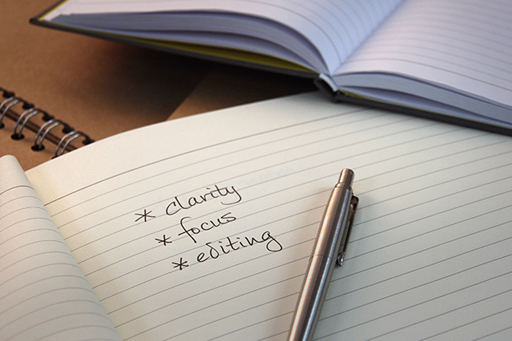3.2.2 Editing practice

Editing is a practical activity and its benefits are only fully appreciated when you undertake it.
To demonstrate the importance of clarity, focus and the role of editing as part of writing, try the next activity.
Activity 3.1 Have a go at editing
Edit the following passage down to no more than two lines:
The heavy black and blue winter sky groaned awfully with rain clouds that at any moment were really about to fall crashing heavily down upon the street where, because it was rush hour, so many people, wearing all manner of different clothes, hats, shoes, boots, some of them carrying bags, suitcases, briefcases, scampered and strolled about the place as though oblivious to what was just about to happen over their very heads. One of these people was called Hilary and concealed inside her voluminous coat she carried the loaded, snub-nosed gun, and she also seemed to be the only one looking upwards into the tempestuous thundery heavens.
Remember to ask:
- What really matters about this scene?
- What ‘adds’ something to the scene?
- What merely adds confusion, detracting from the main point?
Discussion
Considering what other writers might cut or keep can help you to understand the core meaning in the passage and the editing process. This is one suggested edited version. It gives you an idea of what might be considered the core content of the passage:
The winter sky was heavy with rain. It was rush hour. Hilary concealed the loaded gun inside her coat.
Your version may not be quite the same. Ours is very short. Compare it with yours to see whether you decided to retain anything that we have cut, and think about the effect of either leaving that element in or taking it out. Think about why we might have cut out some of the elements, and consider how much stronger the short version is.
Remember that editing often occurs at the level of the sentence and is concerned with word order and punctuation, but also at the level of the whole scene, and even chapter. It is important to cut any overuse of words such as ‘quite’ and ‘really’, to be aware of any passages that are overwritten, and to ensure clarity of meaning. And then there are such aesthetic considerations as style, voice and rhythm. This brief illustration is focused more on the issues of overwriting, redundant words, and clarity of meaning.
There are two different but equally important skills that a writer needs to develop, skills that sometimes seem contrary: the skill to observe details that can bring a story to life and the skill to cut out extraneous details, elements that don’t add to or improve the story.
